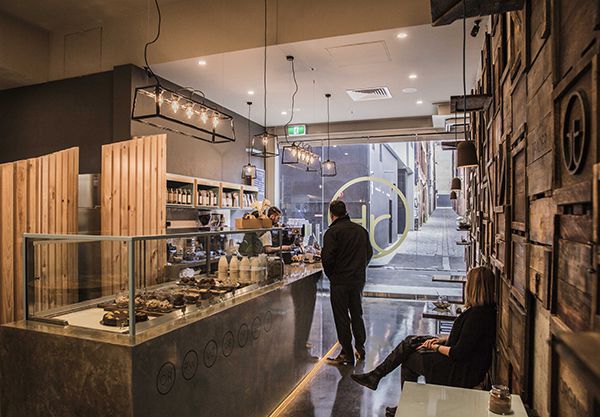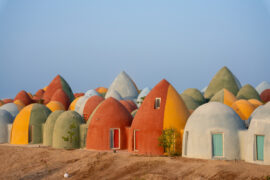How does design interpret raw, organic, locally sourced, and sustainable?

May 11th, 2016
Culinary trends in favour of all things organic, locally sourced and sustainable are still soaring in popularity within the Australian food scene. Different variations on the theme have propped up throughout fashionable and of-the-moment dining districts – but how has design responded, and what design cues best interpret and match the trend?
Melbourne based Studio Y has just completed two projects under the theme. United Kitchen Dining and Tapas is a multifaceted fusion venue, drawing on influences from Spain, Asia and Latin America, but also boasts a menu driven by local and seasonal produce. Raw Trader is a specialty raw desert bar (‘decadence without the guilt’).
“When designing a space with a focus on health food trends like raw and organic, we always make the produce the hero,” says Studio Y Founder and lead designer Yaron Kanor. “It’s important to make the space feel as natural as possible, in a contemporary setting. We love showcasing fresh ingredients, seen in United Kitchen with bunches of chilies and herbs hanging from the ceiling, and glass displays to highlight the raw creations at Raw Trader.”
Studio Y has also made use of the packaging and material the produce arrives in – Raw Trader features a crate wall and stools upholstered in coffee bean sacks. The rustic timber wall appears like a towering stack of wooden fresh produce crates, creating a sense of warmth and authenticity. Turned timber trees towards the rear of the cafe bring the outdoors in, making the ceilings feel high and open. A rendered concrete counter adds contrast to the timber and glass. “My favourite design feature is the pendant lights made from used coffee beans that further enhance the raw aesthetic and that sensory overlay,” says Kanor.
At United Kitchen, rust washed walls and decadent furniture in rich, earthy tones are at once natural looking and sophisticated. The large open and central kitchen features a marble bench-topped bar. “United Kitchen and Raw Trader both use similar contrasting raw and urban materials such as timber features, breezeblock rendered walls, polished-concrete surfaces and marble bench-tops,” Kanor explains. “Most importantly, they both use the food offer as a point of inspiration, not only to inform the design but also ‘pepper’ the design.”
Indeed, for Studio Y, when considering the design of more conscious dining venues, the food needs to play an integral, leading role. “The design of a hospitality venue is all about attracting people in and creating curiosity. If we make the interior sensory and tactile whilst also relating it to the food offer, we are able to create a powerful design for food spaces.”
Studio Y
studioy.com.au
INDESIGN is on instagram
Follow @indesignlive
A searchable and comprehensive guide for specifying leading products and their suppliers
Keep up to date with the latest and greatest from our industry BFF's!

A longstanding partnership turns a historic city into a hub for emerging talent
The new range features slabs with warm, earthy palettes that lend a sense of organic luxury to every space.
The internet never sleeps! Here's the stuff you might have missed

The luxury vinyl plank collection from Godfrey Hirst includes three distinctive palettes – Olympus Neo, Olympus Parquet and Olympus Stone.

The independent Master Jury of the 16th Award Cycle (2023-2025) has selected seven winning projects from China to Palestine.